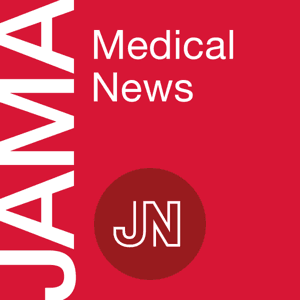Welcome to this week's Gastroenterology and Endoscopy News Roundup, where we bring you the most important updates and research findings for gastroenterology professionals. This episode covers five critical stories from the week of October 21-28, 2025, including new clinical guidelines, groundbreaking research on procedure safety, and the latest technological innovations in endoscopy.
1. AGA Releases Updated Barrett's Esophagus Surveillance Guideline
The American Gastroenterological Association has published a significant update to its clinical practice guideline on Barrett's esophagus surveillance. The new guideline represents a paradigm shift from uniform monitoring to a risk-based, individualized approach.
Clinical Impact: This guideline helps optimize resource allocation while improving early detection of neoplasia in higher-risk patients.
2. OCULUS Trial: Holding GLP-1 Agonists Before Endoscopy Reduces Risk
The OCULUS randomized controlled trial, presented at ACG 2025, provides the first RCT evidence on managing GLP-1/GIP-1 receptor agonists before upper endoscopy.
Clinical Impact: Strong evidence for holding these increasingly common medications before elective upper endoscopy to ensure patient safety and reduce aspiration risk.
3. Landmark Study Reveals 22% of Esophageal Cancers Missed on Endoscopy
A large population-based study from Finland and Sweden analyzed over 15,000 Barrett's esophagus patients and uncovered concerning rates of post-endoscopy esophagogastric cancers (PEEC).
Clinical Impact: Highlights urgent need for quality metrics in upper endoscopy, similar to adenoma detection rates in colonoscopy, to reduce missed cancers.
4. Fujifilm Launches ELUXEO 8000 Endoscopic Imaging System
FUJIFILM Healthcare Americas has unveiled its next-generation endoscopy platform with enhanced imaging capabilities.
Clinical Impact: Backward compatibility offers practical upgrade path for existing users while enhancing diagnostic and therapeutic capabilities.
5. FDA Approves Once-Monthly Omvoh Injection for Ulcerative Colitis
The FDA has approved a more convenient maintenance regimen for Eli Lilly's mirikizumab-mrkz (Omvoh) for moderately to severely active ulcerative colitis.
Clinical Impact: Simplified treatment regimen may improve patient adherence and reduce injection burden.
Sponsor
This episode is sponsored by DigestiveJobs.com
DigestiveJobs.com is the leading career resource for gastroenterology and endoscopy professionals. Whether you're seeking new opportunities, looking to hire talented clinicians, or exploring career advancement, DigestiveJobs.com connects you with the best positions and candidates in the field.
Visit DigestiveJobs.com to explore current opportunities and advance your career in gastroenterology.
https://www.gastroendopod.com




































